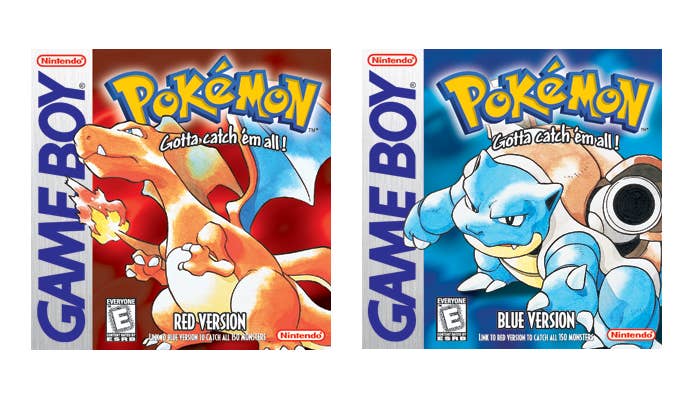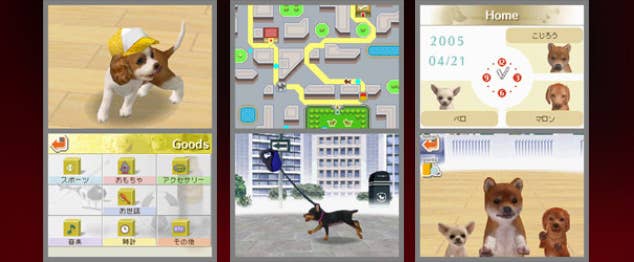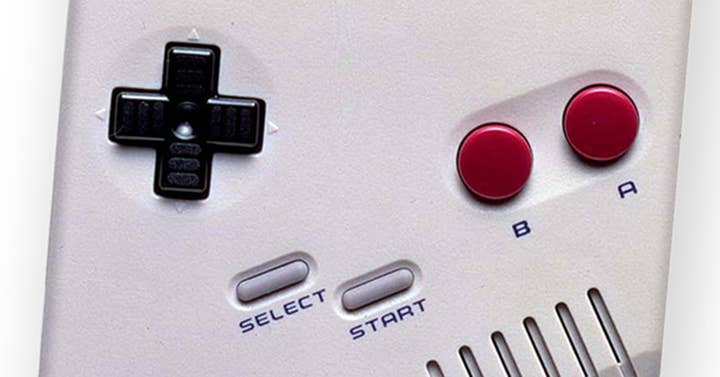From Game Boy to 3DS: The legacy of Nintendo's handhelds
Analysts, developers and former Nintendo staff look back at the why the platform holder dominated the portable gaming space for over three decades
Since the Game Boy's debut in 1989, Nintendo has operated a twin-pillar games business: home consoles and gaming handhelds. The discontinuation of the 3DS, and lack of a direct successor, marks the end of an era, one in which the platform holder not only dominated but expanded the games market.
Ubisoft's brand director for international brand strategy Shara Hashemi says Nintendo's handheld business "revolutionised the games industry", starting with the original Game Boy, which persisted alongside multiple home console generations. Think about it: the Game Boy launched one year before the SNES arrived, and by the time it was replaced by the Game Boy Advance, the PlayStation 2 was already on shelves.
The pioneering device -- and its Color iteration -- went on to sell over 118 million units worldwide. And Guha Bala, co-founder of Mario Kart Live: Home Circuit developer Velan Studios, observes that Nintendo's impact on handheld gaming stretches back even further.
"No other company seemed to be able to repeat the magic that Nintendo started"
Perrin Kaplan, formerly Nintendo of America
"Nintendo defined handheld gaming as a play pattern starting with Game & Watch in the early '80s," he says. "Portable gaming has played a huge role in the content I've enjoyed playing and making for most of my life. It was a totally parallel industry to console gaming for more than 20 years.
"But that changed fundamentally with the advent of mobile games on the App Store in 2008. While I love mobile experiences, they are quite different from handheld games."
Mat Piscatella, executive director for games at data firm NPD, says Nintendo's portable business "had a massive impact on the industry in several ways." Among them was the creation of a prime entry point for a crucial audience: children.
"Nintendo's portable platforms gave many kids a way to connect and engage with games at a younger age, helping them then transition into other types of gaming as they aged, helping make the market what it is today," he says.
"The portable platforms also gave many developers and publishers a less risky way to bring products to market, with lower development costs and faster timelines than AAA console development, for example."
Unrivalled
Nintendo's achievements in the handheld space are all the more remarkable given how rivals Sega and Sony have failed to match them, despite numerous attempts. While Nintendo was dethroned in the home console space over the years, it proved to be untouchable when it came to handhelds.
The top three best-selling handheld consoles in terms of units in the US are Nintendo machines -- DS, GBA and 3DS respectively. Sony's PSP achieves a respectable fourth place, although it's worth noting that Game Boy had a full six years of sales before NPD began tracking in 1995.
Further down the ranks are the 'also rans': Vita, Game Gear, Sega Nomad and Neo Geo Pocket, all of which were unable to rival Nintendo's handheld might.

"No other company seemed to be able to repeat the magic that Nintendo started, and each much larger system died out," says Zebra Partners' Perrin Kaplan, who spent 16 years heading up marketing at Nintendo of America. "I have no doubt that the iPhone app store took a hint from Nintendo when Apple realised games for phones could be a thing."
Niko Partners senior analyst Daniel Ahmad adds: "Nintendo's most successful consoles have been able to pair innovative hardware with its IP in a way that provides unique game experiences for players. This has always been the secret to Nintendo's success, and [it's] why Nintendo invests so much to ensure hardware such as the DS or Switch provides unique ways to play, is affordable, and has software to take advantage of its features."
Bala agrees that the minimalist approach to handheld gaming enabled Nintendo to stay ahead of the competition. By selecting components that allow for a more accessible price point, the company turned its platforms' limitations in terms of raw power into real benefits for players. Case in point: the choice of two-tone displays for the original Game Boy, which improved battery life and made it easier to use in daylight.
"Other systems were about putting a console system in your hands, rather than recognising that an amazing portable game experience deserves a device devoted to just that"
Guha Bala, Velan Studios
"For an experience on the go, that was crucial," he says. "Contrast that with competitor handhelds where faster clock speeds and more demanding displays drove down battery life and places to play. Other systems were about putting a console system in your hands, rather than recognising that an amazing portable game experience deserves a device devoted to just that purpose."
During his time at Vicarious Visions, Bala and his team demonstrated this with a myriad GBA and DS games, many of which converted console experiences into something best suited to handheld. For the GBA launch, Vicarious developed Tony Hawk's Pro Skater 2, which simulated the 3D gameplay of the console versions in a 2D space. Similarly, the studio created the Guitar Grip for the DS' GBA cartridge slot to enable a portable Guitar Hero.
David Yarnton, who served as general manager at Nintendo UK for nine years, says the platform holder's IP was another key advantage in the handheld space. As Yarnton puts it, "it's hard to compete with Mario" -- a claim backed up by NPD rankings that show the four best-selling handheld games in the US to be Mario titles, with the plumber headlining seven of the top 20.

Jo Bartlett, former Nintendo UK head of communications and partnerships, agrees: "With Nintendo consoles, it was never about the tech spec. It was about storytelling, the characters and the Nintendo magic. There was such a broad catalogue of high quality games, and they kept them coming."
For Piscatella, the data shows the power of Nintendo-exclusive franchises -- and there's one IP in particular that really made a difference. It will surprise no one to learn that the US' top 27 best-selling handheld games in terms of dollar sales are all for Nintendo platforms. Nor is it a surprise that all of these are published by Nintendo, and it's even less surprising that 17 of them are Pokémon titles.
"Sometimes things are difficult to analyse, other times there's Pokémon," he says. "Other factors surely contributed. Pricing, branding, and so on... but one portable business had Pokémon, and the others did not."
Dual-Screen Sensation
While the Game Boy undoubtedly set the course for Nintendo's handheld success, the Nintendo DS has perhaps the greatest legacy. It stands as one of the most successful consoles of all time, with 154.02 million units sold worldwide -- second only to PlayStation 2's 155 million sales.
But more than that, it opened the games industry up to new demographics in ways that few platforms had managed before. True, the original PlayStation and its successor expanded the audience for traditional games experiences, but the DS provided something for all ages -- for players from five to 95, as Nintendo used to say.

"Nintendo has been laser focused on games for everyone, devices for everyone, no intimidation of something 'for gamers'," says Niko Partners' president Lisa Hanson.
Ubisoft's Hashemi adds: "The DS opened up new ways of playing with its dual controls and touch screen. Games designed for the DS gave the console great casual appeal, and introduced many people to the video games industry... It brought a user-friendly versatility that made gaming accessible to a much wider audience.
"DS games were unlike any other games on competing consoles. The technology allowed for pet simulators that you can care for with a stylus, or for puzzle games that you can quickly and intuitively interact with."
It was an opportunity that Ubisoft, like other companies at the time, seized. From 2007 to 2014, over the course of both the DS and 3DS, the Assassin's Creed publisher published close to 50 Imagine titles and over 30 Petz games. The former were each themed around different careers that appealed to young girls, while the latter were a revival of the classic PC pet simulators Catz and Dogz.
"We saw an opportunity to widen our audience to a younger female crowd with the DS," explains Hashemi, who was instrumental in launching many of these titles. "Before the DS, the majority of our games appealed to young adults, mostly male. It's not that girls were not interested in these games, it's just that there were no games targeted to them specifically.
"We conducted lots of research with tween girls to discuss their hobbies and interests and what they would look for in a video game. That's where we saw a gap in the market and came up with the Imagine line."

With new interfaces and audiences came new franchises. For those who might not be interested in Mario, Zelda or Pokémon, Nintendo offered Professor Layton's logic-based puzzles or the more straight-faced Brain Age/Brain Training (depending on your region). Even Ubisoft's Petz could be seen as a reaction to the huge success of Nintendogs.
Nintendo's own pet simulator stands as the second biggest-selling DS game of all time, with 24 million units shifted worldwide -- beaten only by New Super Mario Bros' 30 million. The first Brain Age was fourth with nearly 20 million sales.
"Sometimes things are difficult to analyse, other times there's Pokémon"
Mat Piscatella, NPD
However, driving unconventional games experiences to such heights wasn't easy; Kaplan recalls that "marketing games that weren't well-known franchises was a bit challenging," while Yarnton remembers hearing doubts even from his own team members.
"I remember having seen a demo of [Nintendogs] at head office, a lot of the hardcore gamers in our team poo-pooed it," he says. "I had to laugh because weeks later, when we received samples, you could hear people talking to their puppies all across the office -- the hardcore were converted.
"I had such great expectations for Nintendogs and its potential that when I put our forecasts and orders into Japan, they didn't believe them. Needless to say, we exceeded these many times over."
Yarnton also observes that the success of the DS steered Nintendo for the next decade, and set the stage for the most successful home console in the company's history.
"A lot of people say that Wii was a big risk in launching such radical controllers," he says, "but I think DS paved the way for people to be able to play games with a different interface and it introduced so many new users to video games because it was so intuitive to use."
The age of the app
For the 3DS, the platform holder faced a much more challenging market. Having dominated the portable games scene for more than 20 years, Nintendo faced the unenviable task of selling a dedicated handheld at a time when that wider audience could access games on a far more ubiquitous device: their phone.
"A lot of the hardcore gamers in our team poo-pooed [Nintendogs]. Weeks later, you could hear people talking to their puppies all across the office"
David Yarnton, formerly Nintendo UK
The 3DS launched in early 2011, three years after Apple launched its transformational App Store. Casual gamers had also shifted towards other platforms such as Facebook, thanks to hits like the original FarmVille. Meanwhile, Sony was aiming for hardcore gamers with the upcoming release of PlayStation Vita.
Nintendo also faced obstacles of its own making: the difficulty of communicating that 3DS was a new platform, rather than a DS update in the vein of the Lite and DSi, and positioning glasses-free 3D as a key selling point.
Yarnton recalls that, as with the original DS' dual screen setup, the 3D effect "seemed a bit weird to some people... but with sampling, once people played it, they got it." However, shortly after the 3DS' launch, the team had to tackle some hostile press when UK tabloid The Sun ran an article claiming the 3D was making people sick.
"Overcoming this misconception and reminding people that the 3D was optional, safe, and not just a gimmick took a sustained effort," says Bartlett. "A few years later, The Sun ran a piece about how the Nintendo 3DS was the best console ever -- it was a moment of real vindication.
"We also found that a lot of people were still happy with their Nintendo DS so didn't feel the need to upgrade straight away, which was a testament to the longevity of the hardware. The steady stream of top-rated games changed their minds, but it took some time."

There are doubtless still units in the channel, but with the 3DS now discontinued, it's unlikely to rise much further above its current lifetime sales of 75.9 million. It's a respectable total, especially given the shift towards mobile, but still leaves the 3DS -- including its 2DS, New and XL varieties -- as the lowest-selling family of Nintendo handhelds, falling short of the Game Boy Advance's 81.5 million.

With this in mind, and the long-established dominance of smartphone gaming, could we ever see a dedicated Nintendo handheld again?
Kaplan points to the success of the Switch Lite as proof that demand still exists: "There is a market for millions who love a standalone games portable system. I'm one of those millions for sure. So, never say never."
Meanwhile, Hashemi believes Nintendo could always tap into the children's market with a cheaper, more robust handheld: "As a mother to a seven-year old, I am always reticent to give my iPhone to my daughter. I would much rather have her play on a handheld with selected games tailored to her. She would love the Imagine games."
Earlier this week, analysts told Bloomberg that Nintendo could continuously refresh the Switch, iPhone-style, to further grow its audience. If so, the Lite could play a role in this.
NPD's Piscatella agrees that there's no telling how the Switch will evolve, but doubts a dedicated handheld could be released in the same way again.
"The tech is at a place where separating a portable is no longer necessary to have a market viable product," he says. "Today's video game consumers seem to be preferring flexibility with content engagement, so I'd expect other solutions to be preferable to a dedicated portable platform. But things change."
Ahmad and Hanson of Niko Partners observe that, while Nintendo's dedicated handheld line has come to an end, the company's philosophy of integrating hardware and software means handheld gaming will continue to play a role in the company's future -- the Switch being a prime example. The analysts fully expect Nintendo to continue at least offering the option of portable play in some form.
Bartlett concludes that Nintendo's track record of setting itself apart from the rest of the games market, particularly since the DS and Wii, takes nothing off the table.
She concludes: "Part of the magic of Nintendo is never being able to predict what it's going to do next, or how it will capture the imagination of gamers, so who knows what it's got up its sleeve?"

